Pluto began transitioning into tropical Aquarius in March 2023, having transited Capricorn since roughly 2008. Pluto will complete its transition into Aquarius in late 2024, making its final passage out of Capricorn in November. The themes of this cycle are just beginning to emerge on the world stage, and this transitional period will give us a taste of what's to come over the next two decades through the year 2044. The burning question for everyone interested in astrology and its application to world events is, quite obviously, what does this mean?
As a Gemini, I'm here to simplify and complicate things and leave you with some answers but also many questions. First off, Pluto's sign transits are inherently complicated. One might think that a simple perusal through history to look at past Pluto in Aquarius periods would suggest what to expect. This is partly illuminating. However, this tactic is slightly clouded by the fact that all of the major historical moments that occurred while Pluto was in Aquarius happened to also coincide with other planetary cycles involving Pluto (not to mention a host of other planetary cycles and thus, ultimately, astrology is about synthesis). In other words, are those major historical events related to Pluto in Aquarius, or the planetary cycles believed to correlate alongside them? I will argue both (a very Gemini response) but lean more toward the latter.
For example, the American and French Revolutions of the late 1700s coincided with the opposition of Pluto and Uranus. The French Revolution was also the political and intellectual catalyst for the American Constitution, which became the US law of the land under Pluto in Aquarius. While, yes, Pluto was in Aquarius, this Uranus/Pluto opposition (think back to the conjunction of the late 1960s) was what astrologer and historian Richard Tarnas called "Epochs of Revolution" in his monumental work Cosmos and Psyche: Intimations of a New Worldview. Before I continue, I want to point out that Uranus and Pluto will form an opposition during this Pluto in Aquarius cycle, but the exact oppositional contact will happen while Pluto is technically in Pisces (the following sign). However, both planets come within “orb” (within 15 degrees of each other) during the Pluto in Aquarius period around 2042. Therefore, cultural and political events similar to the American and French revolutions (and more, as I will discuss) will be more likely toward the end of Pluto’s transit in Aquarius but peaking more so in 2046-2048.
This framing of the Uranus/Pluto cycle as revolutionary is very fitting, considering that during the cycle of Pluto in Aquarius just before the 1700s cycle (in the 1500s), Nicolaus Copernicus published De Revolutionibus Orbium Coelestium (On the Revolutions of the Heavenly Spheres), specifically in 1543. This work demolished the classical Earth-centered model of the universe and is perceived by numerous scholars and historians as the symbolic birth of the "scientific revolution." This all coincided with an opposition of Uranus and Pluto while Pluto was in Aquarius. It also serves as the backdrop, partly, for the gradual demise of astrology from its enmeshment with power in the West through the dissolution of Aristotelianism at the end of the Middle Ages.
You might have noticed some interesting patterns here. I'll call this a synchronicity, and I argue that it's an integral and real aspect of reality (and how astrology inherently works). Pluto takes about 248 years to orbit the Sun, and it will return to Aquarius in roughly that time span. Over two centuries had passed since the scientific revolution and Enlightenment when the American and French revolutions were sparked, leading to the tangible and symbolic replacement of monarchical and Church power with more democratic and secular forms of governance. The first Amendment of the US Constitution ratified in 1791 under Pluto in Aquarius (and the still waning Uranus/Pluto opposition), was an inherently secularized enshrinement of the "separation of church and state," protecting religious freedom and preventing the formation of a state religion. In France, "Loi de Séparation de l'Église et de l'État," which means "Law of Separation of Church and State," was passed in 1905 (during the next Uranus/Pluto opposition) but was a direct result of the French Revolutionary period.
Science and the scientific revolution were central to the modern conception of the secular worldview, which also places empirical and evidence-based approaches to knowledge application (especially in relation to politics and public policy) above those deemed "religious," "faith-based," or "inspirational." Secularism attempts to prevent the rise of tyranny from "religious" (or non-naturalistically derived) ideas and zealotry. While this conception arose in ancient Greece, such as within Aristotle's naturalistic philosophy (naturalism is the philosophical root of modern science), the 17th and 18th centuries brought these ideas to their modern contours. The result is a neat and clean cultural differentiation between the "religious" and "non-religious." Whatever is "religious" goes over there in some private domain, and whatever is "secular" becomes more acceptable in public venues. Simple, right? Well, it's a bit more complicated (cue my Gemini rant).
Today, secularism has joined forces with other worldviews, such as materialism. I often use the term secular materialism to refer to the overarching belief system that espouses a faith that religion is an objectively definable thing in the world and that physical matter is all there is. Thus consciousness derives entirely from quantifiable and measurable material. Therefore, death subconsciously becomes an enemy since this single life is all we have (and so death must be combated and ultimately eradicated: YOLO!). Sociologist Frank Furedi argued in his many books, most notably, Culture of Fear: Risk Taking and the Morality of Low Expectation, that modern society (due to the collapse of centralized authority and cultural emphasis on individualism) has devolved into a kind of "cult of safety" in which safety and risk aversion have become our collective, moralistic pursuits. As Furedi argued, this moralistic pursuit of safety is at the helm of state power and cultural influence in the West (and it reveals quite a lot about the historical context of the past few years).
Secular materialism (and the complex advancements in computer technology) has also fed into budding religious movements such as transhumanism, which is basically rooted in a Zoroastric/Judaic/Christian apocalypticism. As anthropologist Robert M. Geraci argued in Apocalyptic AI: Visions of Heaven in Robotics, Artificial Intelligence, and Virtual Reality, apocalypticism refers to a highly polarized conception of reality that ultimately generates a sense of alienation. This alienation is solved cosmologically by creating a new future world that purifies and dissolves the past conflict. This purification of the world also involves new bodily forms and an idyllic conception that the tensions inherent in the prior state of dualism will eventually be resolved.
Transhumanism, like many of its ideological roots, conceives of a dualistic tension inherent to reality, most principally, biology vs. technology. Encapsulated within this archetypally is the Descartian body vs. mind polarity, the classical reason vs. emotion, or the Zoroastrian/Judaic/Christian light vs. dark and thus good vs. evil paradigm. In the transhumanist worldview, nature, the body, and inevitably death become the negative and "bad" sources of pain and suffering, and the mind and its technological artificial intelligence (AI) appendages are the "good" sources of future salvation. In many transhumanist conceptions, the singularity (the point at which AI surpasses human intelligence) will lead to a future in which human consciousness will be uploaded into a computer hive mind, robotic bodies will far outlast biological ones, and thus eternal life will be possible.
As Geraci pointed out, the Judaic and Christian mythologies provide the skeletal framework for this worldview. From the perspective of the psychiatrist Carl G. Jung, these myths exist in a collective unconscious and re-emerge in recycled in new forms. Jung also had much to say about the pitfalls of these polarizing myths and worldviews. According to Jung's enantiodromia conception (which derived from the Greek philosopher Heraclitus and become a feature of Hermetic and alchemical teachings), whatever we psychologically set ourselves against eventually assimilates us. For example, if we declare something out in the world as evil and seek to eradicate it, we eventually become the very evil we sought to destroy. This is because, according to Jung, the psyche seeks wholeness and integration rather than further fragmentation. Also, any perceived evil "out there" is a reflection of repressed "evil" within oneself (since the inner and outer are connected). Denying and repressing one’s tendency toward evil grants that aspect more power within oneself and invites external confrontations with it. This all ties into Jung's conception of the shadow, a constellation of repressed aspects of one's psyche. I'll come back to the shadow, so keep this in mind.
Okay, so back to the previous two Pluto in Aquarius periods (that also happened to coincide with Uranus/Pluto oppositions) and science, secularism, and transhumanism. Did science and secularism succeed at keeping religion from interfering with the affairs of the state? Is science even at odds or in conflict with so-called "religion" or spirituality, or is this a distortion from another worldview? Have some of these post-Enligtenment worldviews become the very things they set out to eradicate or control in the world? Science and secularism have spawned ideologies that could be defined as essentially religious. And since these ideologies are considered secular, the very project of secularism, of preventing the formation of a state religion and maintaining religious neutrality, comes into question.
Scientism, for example, is a belief system that espouses that science is the only means of discerning truth, and everything else (art, intuition, myth, astrology, or other modes of symbolic thinking) is devalued, ridiculed, or sometimes actively persecuted. Scientism has also distorted science as some unquestionable authority derived from an established consensus of experts rather than a continuous process of revision, skepticism, and open debate. And Scientism often presents specific scientific data as dogma and decrees rather than one of many potential hypotheses or theories. Hence, as Furedi argued, science serves as our moral authority today, and phrases such as "The Science says" reflect a "moralistic and political project" rather than the true essence of the scientific method [1]. Scientism and its adjacent worldviews, such as atheism or materialism, have faith-based assumptions and beliefs, as all "religious" ideologies do. As ethnobotanist and psychedelic advocate Terence McKenna argued, the entirety of modern scientific cosmology rests upon "one free miracle," a faith in the still unproven "big bang" in which all of the stable and measurable laws of the universe somehow magically arose from nothingness [2]. A belief that nothing gave rise to everything is simply equivalent to believing in a divine or supernatural catalyst since either lacks concrete, empirical evidence.
As I argue in my (still in progress) book on Pluto in Aquarius, Scientism and the overarching worldview of secular materialism, have their own zealots, dogmas, and terrifying forms of tyranny as any Western religion has had. Modern totalitarian movements, as historian and political philosopher Hannah Arendt argued, exploited the cultural mythos of a utopian future built via scientific progress as well as how the Enligtenment’s influence on shaping individualism and a cultural obsession with rationality paved the way to such nightmarish political realities. The Nazi totalitarian state was built upon this mythology and also conducted numerous inhumane and egregious scientific experiments in support of it. The technological-scientific elite that former US President Dwight D. Eisenhower warned about seems to have replaced the high priests of the old religions, and the cultural cult of safety unconsciously seeks salvation and redemption from them whenever faced with a crisis, uncertainty, or the prospect of death.
Furedi’s last work before the 2020 SARS-Cov-2 pandemic, an outbreak of a novel respiratory viral pathogen that killed millions of people worldwide (I’m sure you’re familiar), was How Fear Works: Culture of Fear in the 21st Century. Published in 2019, Furedi prophetically characterized several issues that emerged due to the culture of fear, particularly how science has been moralized and “experts” are paraded via (corporate-owned) media corporations as moral authorities. According to Fuerdi, “Statements like ‘The Science says’ serve as the twenty-first-century equivalent of the exhortation ‘God said’….It has more in common with a pre-modern revealed truth than with the spirit of experimentation that emerged with modernity”[3]. During the pandemic, several mantras such as “trust the science,” “follow the science,” or “believe in science” were parroted by various medical experts and media pundits ironically representing science as the exact antithesis of what it is: as some unquestionable moral authority. Violations of “The Science” were used to make rampant moral judgments on others and to vilify and divide individuals and communities in truly inhumane ways. Indeed, science devolved into a “religious” movement and ushered in an atmosphere that resembled, if mainly archetypally, the Spanish Inquisitions or totalitarian movements. There were calls from very high-profile and influential people (and everyday people) to silence anyone questioning “The Science” and even strip them of basic civil liberties.
While followers of “The Science” might think they’re safe from religiosity, numerous post-modern arguments suggest that religion is not objectively real like the secular materialist worldview would lead us to believe. All worldviews have neat, clean, and insular logic and consistencies which make rational sense within their own context. Yet, step outside that context, such as prehistoric America or any contemporary hunter/gatherer society still enduring today against the challenges of globalization, and you'll quickly realize that such a neat and clean model of religion breaks down. Not all cultures can clearly distinguish what secularism defines as religion or religious behavior from anything else they do. Truthfully, the secular definition of religion, as anthropologist Telal Assad argued, reflects the unique historical processes of the West. While it has a definite cultural reality, it fails to apply cross-culturally and is, therefore, very shortsighted.
Today, the conception of religion also largely reflects political and legal nuances. My view, and one I argue in my book while drawing from Michel Foucault and various anthropologists, is that what we call religion and religiosity is just normal human behavior that can't be cleanly detached from within any culture. It reflects what happens when the very human desire for certainty gets encapsulated in grand narratives and becomes embedded in complex relations of power and hierarchy. If upon death, one enters the kingdom of heaven or if nothing happens at all, there is certainty about it, and that can be psychologically processed far better than uncertainty can. By the way, when humans are attached to their certainty, they will go to extraordinary lengths to defend it, hence "religiosity" devolving into violence and tyranny. As Furedi also argued, “The use of the term ‘The Science’ in public debates expresses its advocates’ insecurity with the absence of certainty. This leads to a defensive posture where scientists are reluctant to entertain the possibility they might be wrong and their critics might have a point”[4]. The world witnessed this groupthink mentality in countless ways for several years following the initial outbreak, and it deeply reflected how the fear of uncertainty could go far in distorting the very integrity of individuals and their philosophies, all for the sake of offering hope, security, and protection from uncertainty during a novel and ever-changing pandemic situation.
Secularism makes sense as a uniquely historical backlash against prior theocratic modes of governance and tyranny. The idea of religion is, therefore, an attempt to socially quarantine so-called "superstition" or "magical thinking" and keep it from infecting the rational and reasonable affairs of the state and the project of science (which is conceived in a variety of ways). However, the religiosity of Scientism (and its ideological appendages) contains just as much “superstition” and “magical thinking” as any other faith-based belief. The public and many experts readily embraced untested (or little tested) and uncritically examined “solutions” during the SARS-CoV-2 outbreak even long after evidence emerged placing their usefulness into question, such as prolonged, widespread lockdowns, six-foot distancing guidance, mask and vaccine mandates, and highly novel pharmacological interventions, all under the hope and faith that the threat could be eradicated and the world returned to normalcy. Perhaps such hope and faith and blind adherence was well-intentioned, yet in a paradoxical reality, good intentions can have harmful outcomes. What if Jung was correct that we can't eradicate what we are? What if humanity is inherently prone to what we term "religious" behavior, “superstition," or “magical thinking,” no matter how much Scientism attempts to stamp it out through its myopic obsession with rationality (enantiodromia, anyone)? What if the idyllic vision of a utopia of any kind, whether supernatural, political, scientific, or technological, is just a fantasy of the human mind that probably serves some evolutionary purpose (such as social cohesion for maintaining the project of civilization since it appears to have a highly adaptive function)? Ultimately, what if humanity will never eliminate risk and uncertainty, no matter how certain it is that it has?
In my research, I extracted three themes inherent to the Aquarian archetype, more so relevant to its application to mundane astrology: knowledge, novelty, and social cohesion. If they occur in any order, social cohesion would probably come first, but I thought it sounded better this way. It has a ring to it, methinks. I gathered this threefold nature of mundane Aquarius using the lens of synchronicity and through the very literal cultural evolution of the sign from its Mesopotamian roots. We can trance an interesting mythological lineage from the Mesopotamian god Enki/Ea to the Greek titan Prometheus, and even to figures such as Jesus, transhumanist conceptions of AI-augmented computer technology to advanced alien species as conceived within modernity's UFO cults, disclosure movements, and various New Age syncretisms.
By the way, I am not debunking Jesus, UFOs, or an advanced AI salvation, but rather pointing to a worldview in which such things are archetypally linked and reflect the same symbols within the collective unconscious. In many ways, in whatever form these symbols take, they are often involved in grand narratives that provide certainty, and thus they can be conceived as expressions of religiosity. Whether they reflect an objective or concrete reality of some kind matters less in a universe in which consciousness permeates everything, and thus mind, and the external world is intimately linked. Unconscious, symbolic archetypes can have very concrete manifestations in the world, but also psychological ones. Either manifestation can be read symbolically.
Okay, so what I am getting at here is that Aquarius (especially in its shadow expression) synchronously reflects the savior deity in its many guises, a figure who liberates humanity from its baser, biological, and bestial existence to one more "godlike" and transcendent. Aquarius also connects to apocalyptic mythologies of various kinds. The flood myth, present in early Mesopotamian texts (and most famously as the story of Noah's Ark in the biblical book of Genesis), spoke of a time when a previous world was destroyed and replaced with a purified version. Enki/Ea was intimately involved in this event, saving some humans and other living things and placing them upon an ark. Akkadian scholar Hans Galter argued that the Mesopotamians interpreted this story as a very real transition in how humanity gathered knowledge, for example, a transition from internally derived knowledge acquisition to scholarly knowledge collection. As Galter put it, the myth symbolized the transition "from sages to scholars"[5].
This wise observation suggested that millennia ago, people understood how scholarly knowledge collection fundamentally transformed culture and allowed for civilizational advancements. From every culture's inherent ethnocentrism, I'm sure that the Mesopotamians believed they had achieved its ideal, yet they unlikely conceived of how far that transition would take us. In a way, as of now, AI symbolizes an apotheosis of human knowledge collection, or at least the more formative steps to it as reflected in Large Language Models (or machine learning) utilized in popular platforms such as OpenAI's ChatGPT currently writing up essays for college undergrads and something this author finds a helpful research assistant (but no, it didn't write this essay, I swear!). Enki/Ea, and later Prometheus, was also responsible for gifting humanity the tools and knowledge needed for its civilizational and scientific endeavors.
This brings us to novelty and genius, which are essentially built upon the knowledge and genius of the past. Novelty and innovation don't magically appear out of thin air (though interestingly, Aquarius is an air sign). Every innovative leap or genius idea started from things already conceived and established, thus the ideal of science as a perpetual process of improving upon existing knowledge by replicating testable hypotheses and theories. All of this, of course, requires social cohesion or collaborative efforts. Even the mythical lone genius or mad scientist draws from past efforts and previously drawn conclusions. Thus, maintaining cultural traditions is central to this. A few thousand years devoid of some cataclysmic global event is why humanity has achieved the technological and social complexity it has. The intellectual and innovative capacity of the Mesopotamians was no different from ours today.
Many astrologers have established that Aquarius rules geniuses, but it also relates to all kinds of outsiders, heretics, and exiles. As with the apocalyptic myths, the archetypal essence of alienation is inherent here. As astrologer and Jungian analyst, Liz Greene argued in The Astrology of Fate, and in reflecting upon Jung's interpretation of the Garden of Eden myth as a syncretism of the Promethean theft of fire myth, "isolation from fellows is a profoundly painful dilemma for the socially minded Aquarian. [6]" As Jung argued, like Prometheus' theft of fire from Zeus to gift to humanity (and thus to make them "godlike"), the Eden myth also represented the price paid for the acquisition of "fire," or rather, "knowledge" plucked from the tree at the behest of the serpent Lucifer (a very Promethean character). From Jung's conception, the expansion of consciousness leads to alienation as it separates the more conscious from those less so. It is interesting to point out that, archetypally speaking, there is interchangeability between the Christianized Lucifer and Greek Prometheus and other savior figures like Jesus. This is also reflected in how technology (or even UFOs) can be conceived as both salvific and condemning. For example, not all AI experts are optimistic transhumanists, but outspoken prophets of doom, warning of AI armageddon (a topic that gained prominence during Pluto's first cross into Aquarius).
As the saying goes, "It's lonely at the top." Enlightenment, or any "special" knowledge, comes with a price. Greene argued, "All the traditional Aquarian fields of endeavor--science, invention, social welfare, psychology, even astrology--are tainted with this loneliness which is the price of offending Zeus"[7]. Of course, such a paradigm gets inflamed within a highly polarized conception of reality in which there are humans and gods, good and evil, or an underlying antagonism between a "lower" and "higher" order of things in the universe. This conception didn't dissolve at the dawn of the Enlightenment. If anything, this polarized and apocalyptic conception has persisted even more; in fact, it appears to have literally manifested in the drama unfolding on the world stage in which highly polarizing elements are the topics of the day, and perpetual class struggle lies at the root of so much oppression. Marxism, for example, is inherently apocalyptic--the underlying desire to eradicate this struggle to give way to a communist utopia deeply reflects this. Karl Marx was interestingly born with Aquarius rising during a Pluto/Uranus/Neptune square—a highly Promethean character.
From an astrological, Hermetic, Jungian, and thus archetypal view of reality, the world is embodying these myths in a very real and tangible way, and the more unconscious we are of this, the deeper we go into them and the more polarizing the world appears to become. Several zodiacal signs embody duality (in fact, duality is inherent to the codified, western astrological system). Yet, if only synchronously so, Aquarius does appear to reflect an intrinsic duality, especially since, as I argue, it contains some essence of Western apocalypticism. Duality is a part of our third-dimensional existence and central to our subjective experiences. However, how we conceive of this duality changes our relationship and attitudes about it. Duality can be perceived as necessary and complementary or the result of some antagonistic relationship or divine condemnation. In the former, the necessity of duality allows for reconciling opposites and paradoxes, unleashing breakthroughs in perceiving the underlying unity of the universe.
According to historian of astrology Nicholas Campion, the first astrologer to add more complexity and nuance to the zodiac signs was theosophist and entrepreneur Alan Leo [8]. Before Leo, astrologers used a rather simplistic listing of qualities or associations when discussing zodiac signs, but they lacked much descriptive depth. The more deeply psychological characteristics of zodiac signs came a bit after Leo in the latter 20th century. However, Leo forged a new conception of the zodiac, allowing signs to provide immense descriptive detail. Leo, as far as I know, first made the association between Aquarius and dual serpents--a reconception of the two parallel wavey lines (the Aquarius glyph traditionally symbolic of water). This connected for Leo to the Eden mythos. In his typical theosophical way, he imagined this through the lens of the encroaching Aquarian age and the "evolution" of humanity to a higher, more enlightened spiritual existence. For Leo, those born with Aquarian placements, for example, did not yet exhibit the full potential of the sign, as the new age was still dawning upon humanity.
According to Leo, "As the last of the fixed signs it [Aquarius] has been symbolized by two serpents, the one the serpent of wisdom and the other the old Adam or serpent of the earth. In this symbology lies the mystery of human destiny" [9]. For Leo, wisdom symbolized the "higher self-conscious ascent" into humanity's ultimate potential in the Age of Aquarius, while the "old Adam" was in reference to the bestial "lower nature" which needed to be controlled for the higher potential to be attained. Leo presented a theosophical reconception of Aquarius, drawing upon numerous spiritual and esoteric traditions. Theosophy, which espoused the conscious evolution of humanity to a more ideal, humanitarian, or spiritually enlightened future existence, came to significantly influence what is today referred to as the modern "New Age" as well as modern astrology.
Numerous New Age worldviews contain apocalyptic undertones, often combining the theosophical progression toward spiritual Enlightenment. Though, there is no homogenous New Age ideology, and today, even theosophical offshoots are highly varied and diverse. However, many of these worldviews seem to draw upon the similar Zoroastrian/Judaic/Christian dualistic worldview, where humanity's earthly existence is somehow at odds with its divine nature or potential. Yet also, there are obvious Platonic elements as well, such as an ascent of the soul into the cosmos. Even some Hellenistic (Greco-Roman) astrology expressions had apocalyptic motivations and influences; thus, it is not inherently new. As I argue, whether spiritual, technological, or political "evolution" toward some more idyllic future state need not matter. The root of the idea is very old and appears to endure within the collective unconscious and mythic memory.
By the way, I am not arguing that this is inherently bad or wrong, shouldn't be, or does not reflect some truth about the world or universe we experience. Synchronicity might suggest that it does. Suppose a past deluge mythologically exists from ancient memory and within the collective unconscious. In that case, it makes rational sense why the idea of the eventual or cyclic purification of the world would persist (and potentially why this transition toward scholarship was catalyzed to help determine, predict, and thus prepare for the next one). Yet, perhaps with such a polarizing worldview, we should become more conscious of it since ignoring its archetypal foundation breeds more polarization rather than the unity that's unconsciously desired. Perhaps, to reach a wiser tomorrow, we should look more within than without for the source of our troubles. While I'm a bit cynical of any perfected future state of human existence, I believe that humanity makes improvements, learns from its mistakes, and attempts to improve conditions for future generations, despite numerous interests (and maladaptive cultural blindspots) that often counter these attempts.
I have said very little about Pluto (pun intended, as it is pretty small). While no longer considered a major planet by some astronomers and is instead classed as a dwarf planet, Pluto still packs a punch from the astrological point of view. I argue that early 2020 was a case in point with Pluto's conjunction with Saturn. Read my article I published in early 2019 predicting that crisis. I flesh it out retrospectively in my upcoming book and have touched on it here. For brevity's sake, I argue (as do many other astrologers) that Pluto deals with the collective shadow. You could say that on the mundane level, Pluto cycles are about doing our collective shadow work, integrating those repressed, denied, and ignored dimensions of humanity and culture.
Pluto cycles are difficult because they present us with stuff we don't like and often don't want to see. Pluto also dredges up that core human wound or Achilles heel--the dreaded uncertainty of the universe. Yes, it is often during Pluto cycles that we are confronted with specific uncertainties related to the archetypes it contacts and a host of unintegrated shadow material from the collective unconscious. What are the shadows of knowledge, novelty, and social cohesion? I will get deep into this in my upcoming book and relate it to many current and developing world affairs. Also, as an underworld deity, Pluto relates to a literal and symbolic death and transformation of those themes.
But I won't leave you hanging entirely. Over the next two decades, as with many Pluto in Aquarius periods, the world's knowledge acquisition and dissemination strategies, conceptions of social organization, and technological capacities will be transformed, and the seeds of an even greater transformation will also be planted (as with the scientific, American, and French Revolutions). Since Aquarius is also a sign associated with the constellation of a human figure pouring water from the heavens, this sign deals with humanity itself--its ideas, worldviews, cosmologies, and complex social structures. What needs to be dealt with within ourselves to get to the task of creating a wiser tomorrow? How might we have been walking zombie-like lately, unaware of the many ways we have become our (and maybe the planets') own enemy? How are we shooting ourselves in the collective foot?
If there is any sign that deals most profoundly with collective issues and their dark side, like groupthink or what psychologist Matias Desmet has called "mass formation," it is Aquarius. I don't think we'll necessarily enjoy the shadow work required to realize how these human vulnerabilities have paved the way to some hellish situations, and it is all inherently paradoxical. Following the herd is sometimes wise, and other times, not so much (especially in a highly complex social world). Another theme I pulled from my research is the saying, "The road to hell is paved with good intentions." I touched on this in discussing the SARS-CoV-2 pandemic and how good intentions are not always good. Reflect back to the apocalyptic mythos I just discussed, especially those of the past in which well-intentioned humans attempted to reach a heavenly abode only to create quite the opposite (hence the nature of polarizing worldviews). How many attempts at reformation or attaining some utopia wrought destruction, suffering, or literal genocide? Or how can a desperate attempt to stay safe and reduce risk ironically create more danger? What happens when a culture attempts to eliminate contingency entirely and desperately clings to rational control?
Scientism, transhumanism, and various New Age belief systems may well create (if not already) some real hells in their unconscious pursuit of utopia, reformation, and certainty, as have all apocalyptic worldviews. We will have to reckon with that reality over the next two decades in a way that will be uncomfortable, sometimes painful, but, ultimately, for the best. Grand narratives never quite seem to pan out, so I don't attempt to espouse one. In fact, if astrology has taught me anything, it's that while the future may be archetypally predictive, it's more often filled with surprising plot twists nobody could have imagined. When we surrender to uncertainty, we might find that those surprises and accidents make life most interesting.
Lastly, to come back to the theme of novelty, human innovations are sometimes incredible and miraculous but also sometimes terrifying and dangerous. Again, within the polarizing framing of humans and gods, this often gives way to conceptions of a "godlike" elite or individuals who believe themselves ordained by a higher power or mission to "play with fire." Of course, I use fire in reference to the Prometheus myth. The divine fire of the gods can illuminate the world but also destroy it. Playing with fire, that is, utilizing the power of the gods with hubris, is a very dangerous game and can create some collateral burns. Pluto in Aquarius will reveal the many ways in which such powers may need to be curtailed, and that might happen through some tough collective lessons and experiences through the shadow of novelty. This theme, by the way, emerges within a complex interaction of astrological archetypes, involving not just Pluto and Aquarius but also Uranus and Saturn and combinations of these planets and the Aquarian sign. I analyze this phenomenon more deeply in my book.
Evolutionary biologists Heather Heying and Bret Weinstein coined the term "hyper-novelty" in their recent book A Hunter Gatherer's Guide to the Twentieth-First Century. Hyper-novelty is a similar concept to hyper-change, often utilized by former US Vice President Al Gore regarding the threat and dangers of anthropogenic climate change. According to Heying and Weinstein, hyper-novelty refers to how our technological progress is accelerating faster than our biology or the natural world can adaptively manage [10]. As Heying and Weinstein suggest, this pace of acceleration often ignores wise heuristics such as "Chesterton's fence," suggesting the use of caution before tampering with systems that aren't fully understood. Of course, as biologists, Heying and Weinstein referred more specifically to biological systems. However, it can also apply to technological ones, like the rapid development of AI technology platforms or quantum computing, just as it does to novel pharmaceutical products and interventions.
One other overarching theme I deal with deeply in my book is the way that complex economic systems, such as neoliberal hyper-capitalism, have made these concerns even more pressing. If profit motivation and the financial bottom line also rise to the helm of state power and interest, how does that further present us with dangers, especially when "playing with fire." In other words, when novelty and knowledge acquisition are pure capitalistic enterprises rather than truly humanitarian ones, how might this lead us into hazardous territory? Worse, how has this, combined with Scientism, distorted science, and its endeavors? Can we really trust "The Science" when debates are censored, heretics are silenced, and corporate interests lobby universities, congressional representatives, or health organizations? And worse, if Scientism is a new religion, has the secular worldview failed to account for this blindspot via its narrow and ethnocentric definition of religiosity?
Is there hope? Is a wiser tomorrow possible? As a Gemini, I'm both a cynic and an optimist. I may have a bias that the universe, or at least from our point of view, is paradoxical. Our divine task is to rise above the paradoxes and perceive the underlying unity. Therefore, the universe may not be ultimately paradoxical but one unified whole or consciousness. The next zodiac sign, Pisces, deals more with that reality. Still, Aquarius points the way, and Pluto, through this sign, is our bridge to discovering the innate unification of reality we unconsciously desire and what Western apocalypticism both wants and resists. Of course, the drama is rather juicy too, and if Jung taught us anything, some part of us keeps us tangled in it all. Pluto in Aquarius will require some challenging collective work, as all Pluto cycles do. Still, I hope it will help us create a wiser tomorrow. The Enlightenment brought great ideas and solutions into the world just as it made new problems. Science is an extraordinary tool when applied humbly and consciously, and it has undeniably helped us better understand the universe while improving living conditions. Yet, distorting science for moralistic or political motives or taking science to a hyper-rational end-point in which all other views into the nature of reality must be condemned or eradicated will further damage our collective heart and soul. Making science and technology out to be some salvific diety is a problematic unconscious projection eradicating the paradox inherent to science, obfuscating its destructive potential. Yet, so too is the opposite demonization of such things. Technology is both miraculous and potentially disastrous, capable of Promethean liberation and enslavement. Our collective work starts by looking deeply into our own darkness and doing our best not to demonize it, especially not to demonize each other. We must transcend the paradoxes and polarities and see that our perception of evil is not something to be cleansed and eradicated from the earth but something to learn from through acknowledgment, understanding, integration, and love. We are all human, after all, not gods, at least not in our flawed and fleshy ape bodies and minds. While we cannot escape our humanity (especially by denying it), we can become more conscious of it. And a bit wiser, too.
References
[1] Frank Furedi. How Fear Works: Culture of Fear in the 21st Century (London: Bloomsbury, 2019), p. 144.
[2] Rupert Sheldrake, Terrence McKenna, and Ralph Abraham. The Evolutionary Mind: Conversations on Science, Imagination and Spirit (Rhinebeck, NY: Monkfish Books, 2005).
[3] Furedi, How Fear Works, p. 144.
[4] Ibid.
[5] Hanns D. Galter, "The Mesopotamian God Enki," Religion Compass 9/3 (2015), 10.11, p. 72.
[6] Liz Greene. The Astrology of Fate (York Beach: Samuel Weiser, 1986), p. 255.
[7] Ibid.
[8] Nicholas Campion. Astrology and Popular Religion in the Modern West: Prophecy, Cosmology, and the New Age Movement (London and New York: Routledge, 2016), p. 71-72.
[9] Alan Leo. Astrology for All (New York: Cosimo Classics, 2006), p. 23.
[10] Heather Heying and Bret Weinstein. A Hunter Gatherer's Guide to the Twentieth-First Century: Evolution and the Challenges of Modern Life (New York: Portfolio/Penguin, 2021), xii.












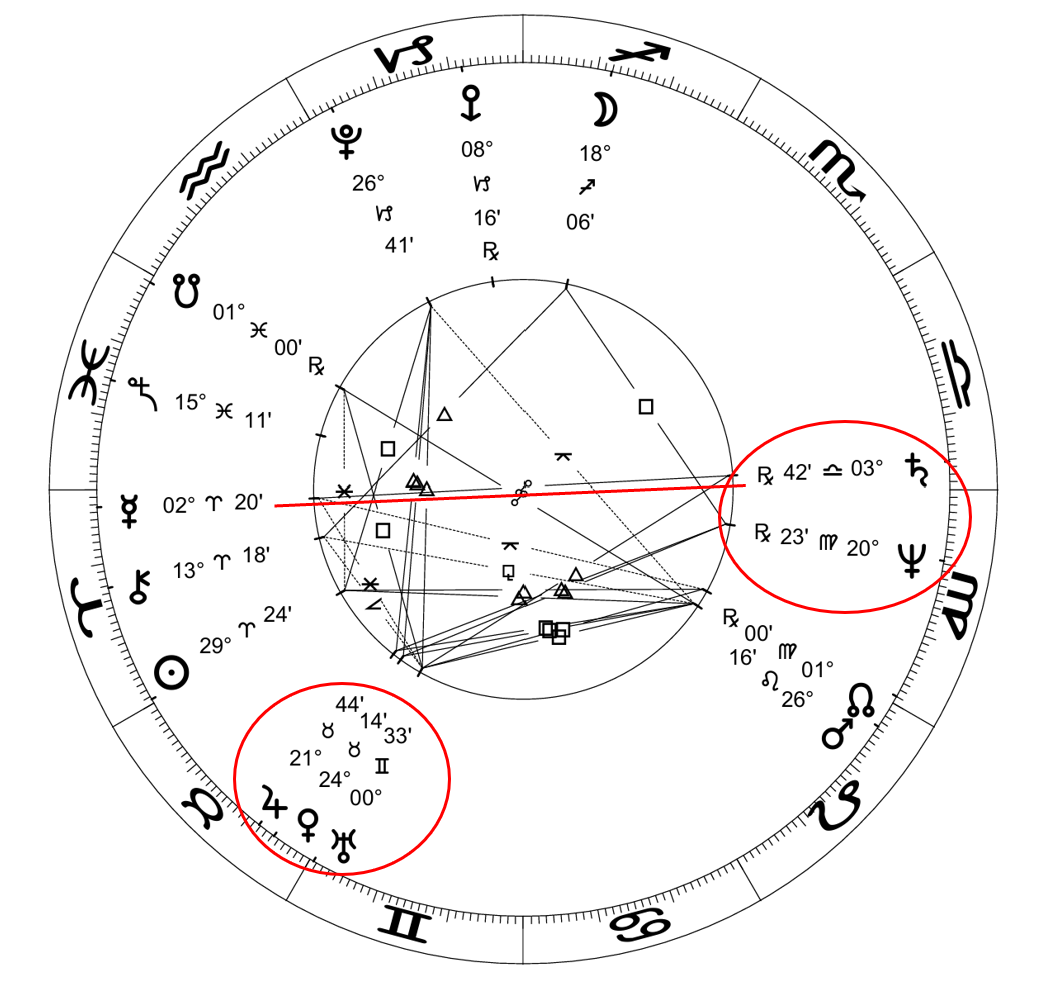
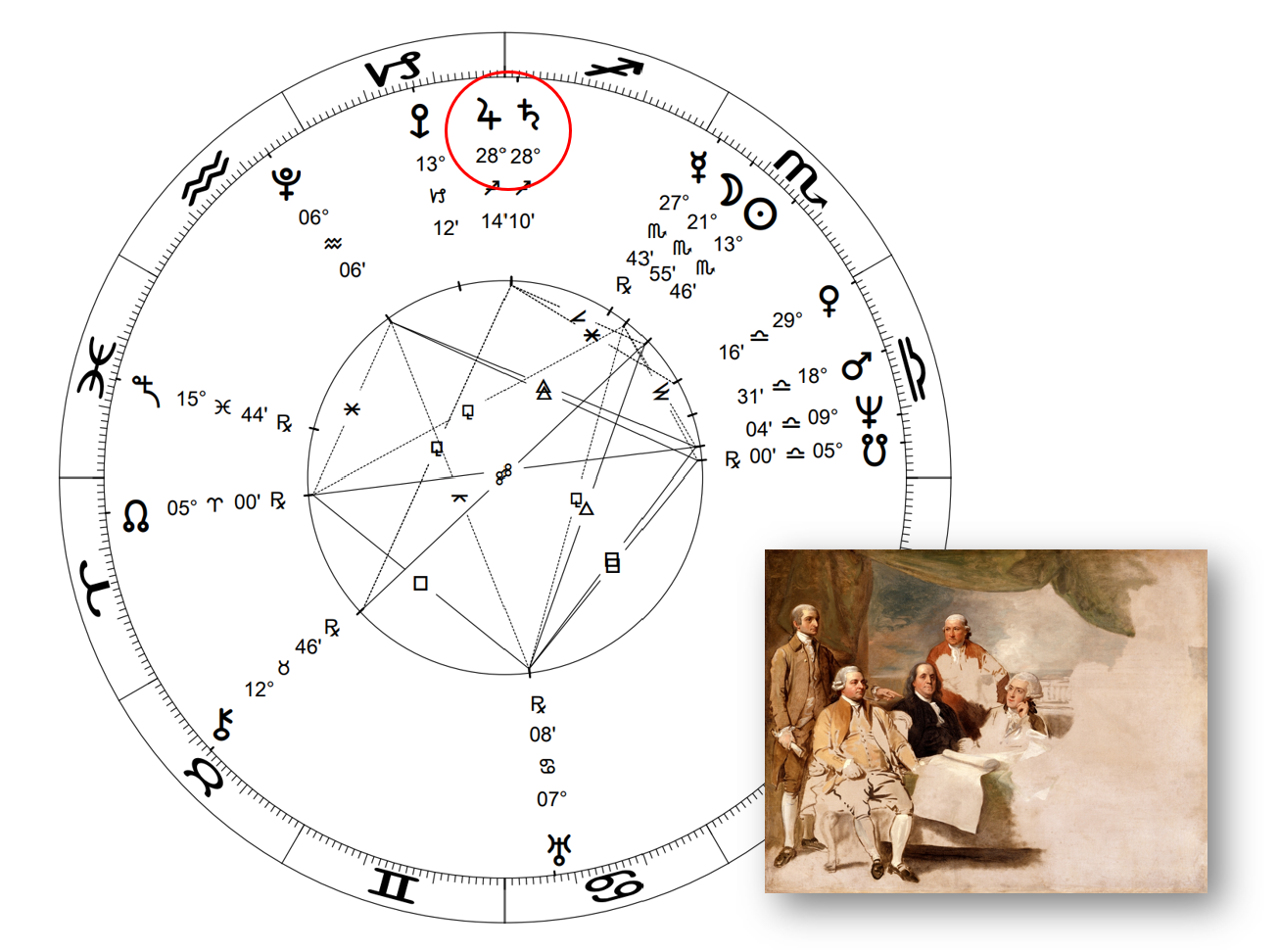

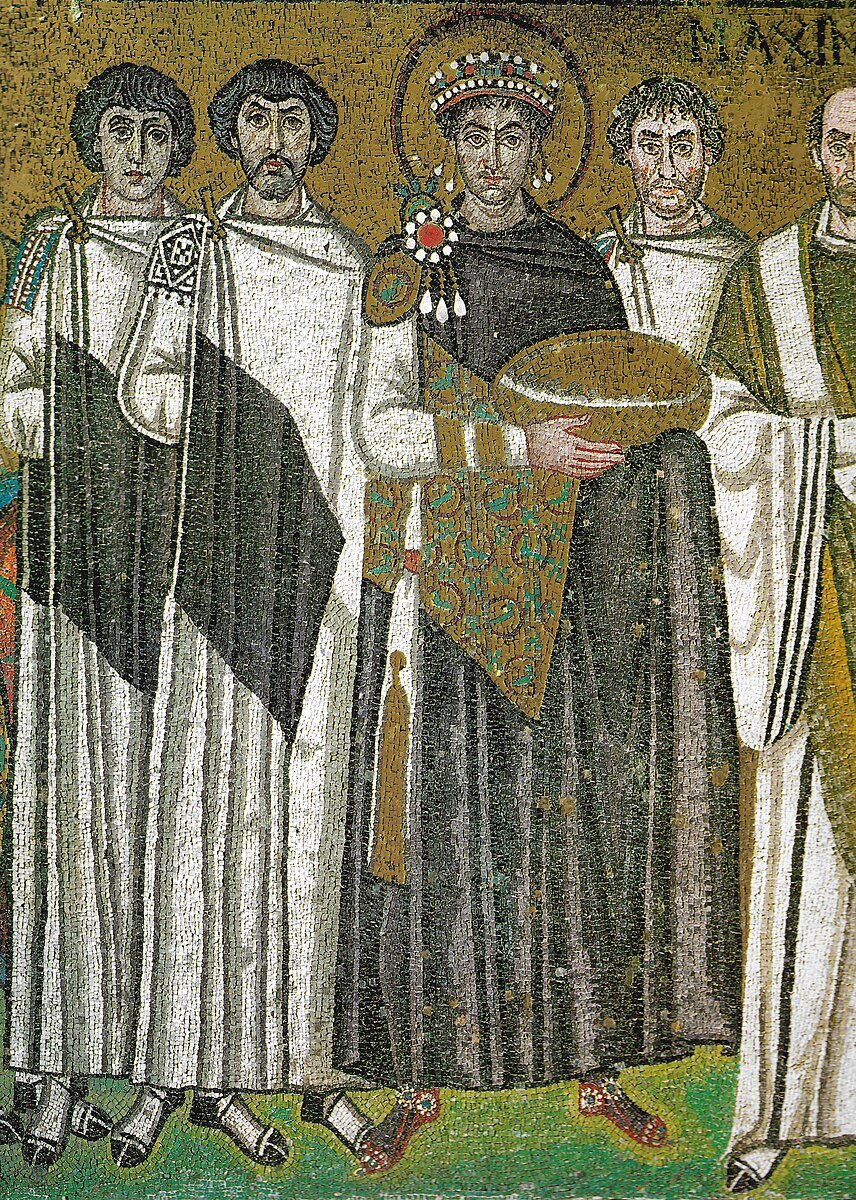






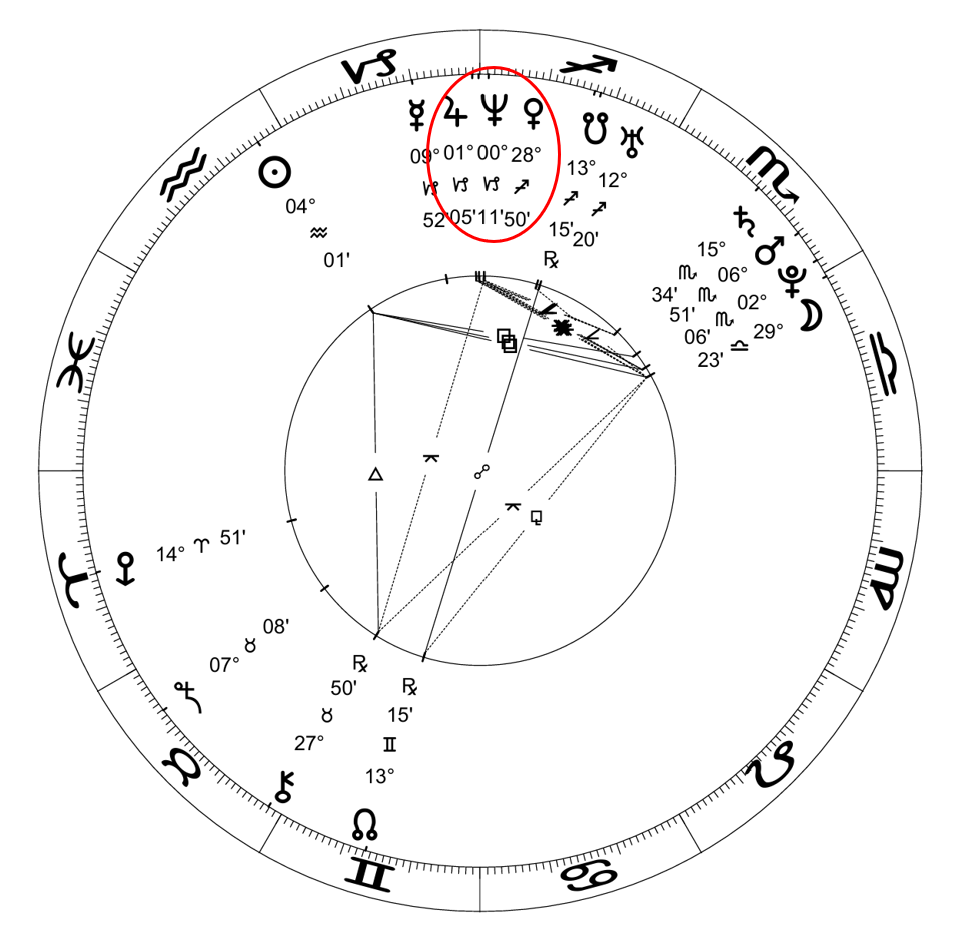






































![Alchemist-hp (talk) (www.pse-mendelejew.de) [FAL]](https://images.squarespace-cdn.com/content/v1/5710195837013b18ee712c68/1562049406968-EKJ9RP8DHWYCOT9GMARS/1024px-Crepuscular_rays_at_Sunset_near_Waterberg_Plateau.jpg)


















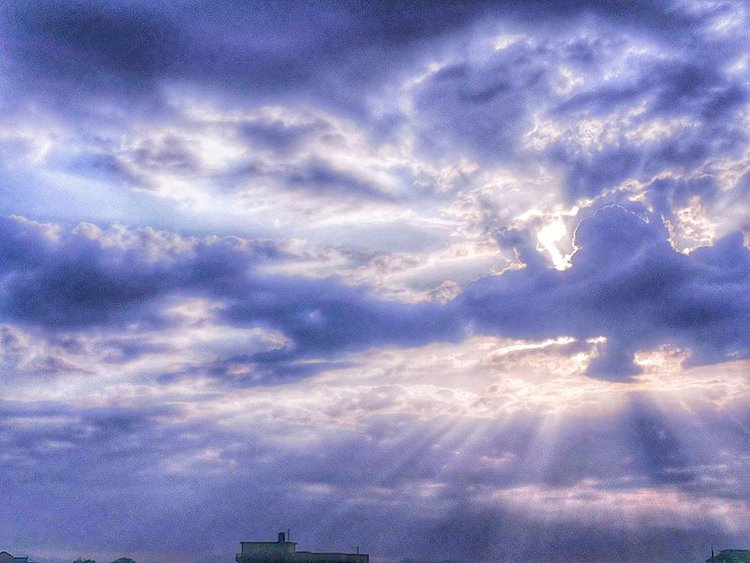














![People marching to protest the Dakota Access Pipeline near San Francisco City Hall; photo by Pax Ahimsa Gethen. By Pax Ahimsa Gethen (Own work) [CC BY-SA 4.0 (http://creativecommons.org/licenses/by-sa/4.0)], via Wikimedia Commons](https://images.squarespace-cdn.com/content/v1/5710195837013b18ee712c68/1486926387543-4YGE77EU67P7A6LWUUTC/image-asset.jpeg)


![People marching in protest to the Dakota Access Pipeline; photo by Pax Ahimsa Gethen. (Own work) [CC BY-SA 4.0 (http://creativecommons.org/licenses/by-sa/4.0)], via Wikimedia Commons](https://images.squarespace-cdn.com/content/v1/5710195837013b18ee712c68/1486927298502-1OWTHCYHTMKJTT6V5MBR/image-asset.jpeg)


![Day 14 of Occupy Wallstreet; photo by David Shankbone [CC BY 3.0 (http://creativecommons.org/licenses/by/3.0)], via Wikimedia Commons](https://images.squarespace-cdn.com/content/v1/5710195837013b18ee712c68/1479876012912-HQ0HFVME1J5Q4X7N5MN1/image-asset.jpeg)

